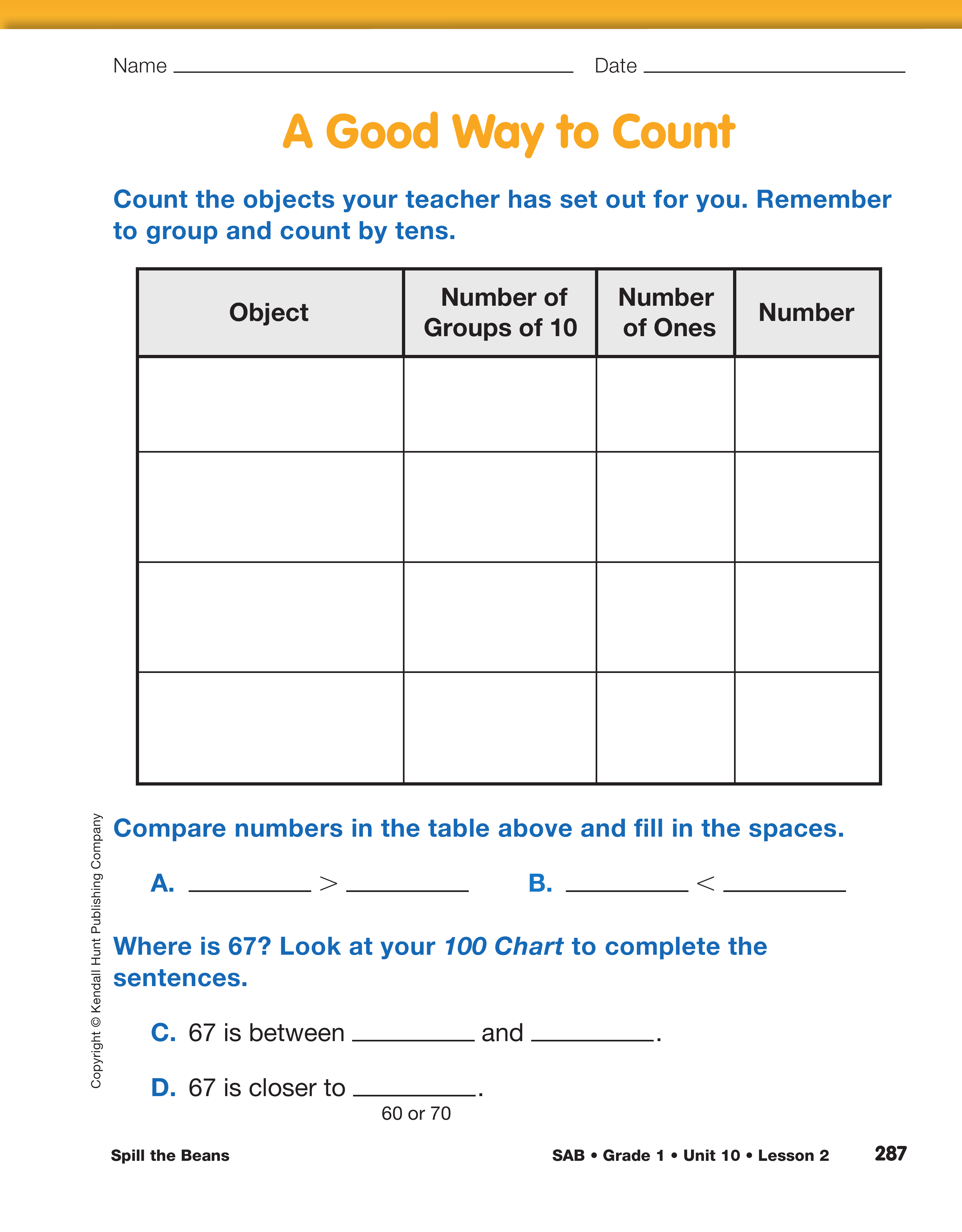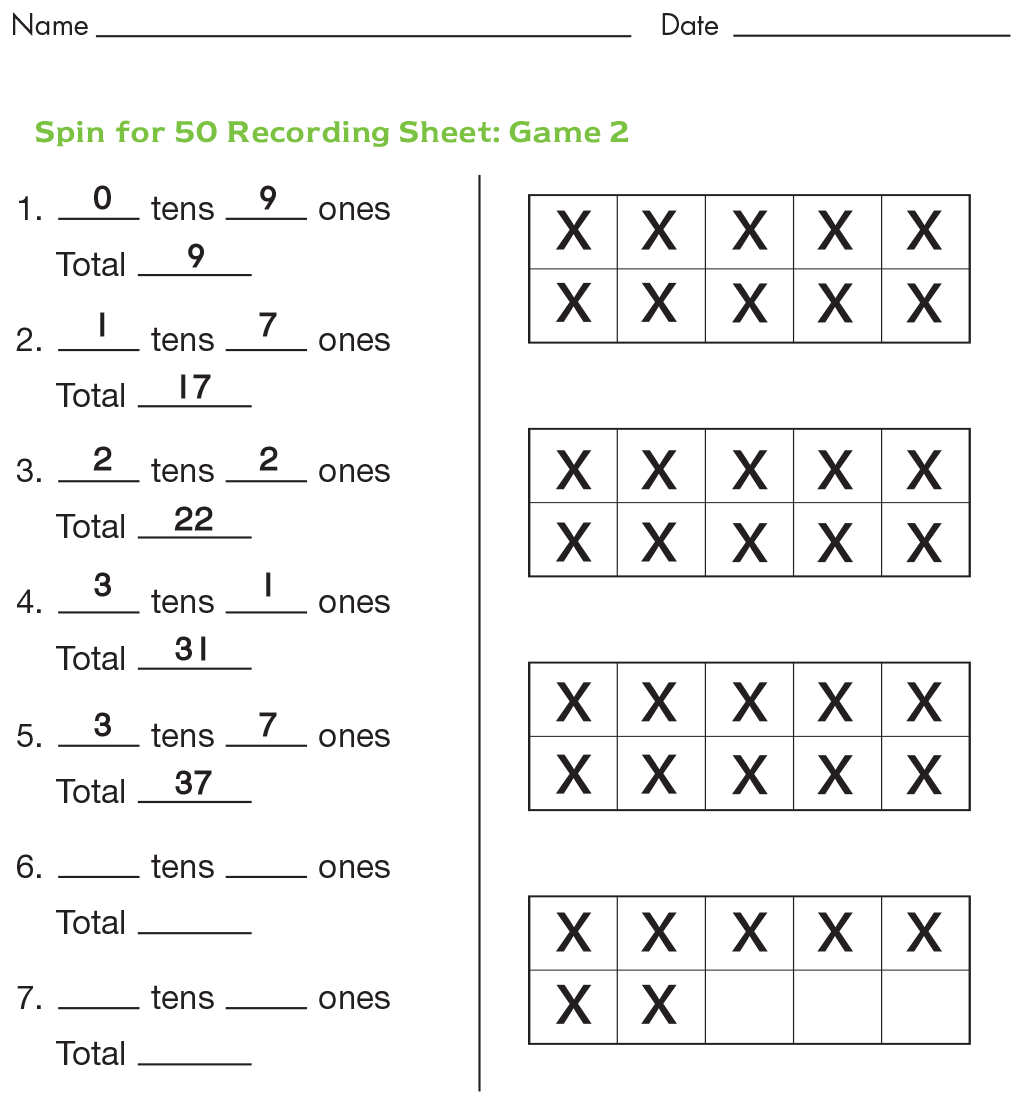In this lesson, students represent two-digit numbers
using ten frames. They practice using the language
of tens and ones as well as conventional number
names. Complete the lesson by connecting these
ideas to other representations of two-digit numbers,
including number lines and 100 Charts. Use a display
of the Spin for 50 Recording Sheet: Game 2
section and fill in five turns as shown in Figure 3.
Discuss the following with the class:
- How many total Xs did this player have after the
fifth turn? (37) How do you know? (Possible
response: I counted three full ten frames: that's
10, 20, 30. Then 7 more ones, that's 37.)
- How many more does he or she need to win the
game? (13) How do you know? (Possible
response: I counted up from 37 to get to 40,
that's three. Then I counted 10 more to get to 50.
3 and 10 more equals 13.)
- How many groups of 10 Xs are shown on the
10 frames? (3) How many leftover ones? (7)
- In class, we have represented numbers using
other tools. What is another tool that we can use
to show 37? (Possible response: We can use the
100 Chart, connecting cubes, number lines, or
pictures.)
- Show me 37 on the 100 Chart. How many groups
of 10 are in 37? (3)
- How does the 100 Chart show the three groups of
10? (Possible response: There are 3 full rows of
ten. They are the three rows above the 37. See
the 10, 20, 30 at the end of each row.)
- How is showing 37 on the 100 Chart like showing
37 using ten frames? (Possible response: There
are three full ten frames and three full rows on
the 100 Chart. Then 7 leftover ones on both the
ten frame and the 100 Chart.)
- What other tool can we use to show 37? (Possible
response: the number line.)
- Show me 37 on the number line. How can we show
the three groups of ten and 7 ones on the number
line? (Possible response: Show three big hops
from 0 to 10 to 20 to 30, then show seven little
hops to 37.)
Demonstrate three big hops and seven little hops to
37 on the class number line.
Students may also mention using three trains of ten
and seven more connecting cubes or drawing pictures
to represent 37 objects. Repeat the process with
the number 42 by adding the Xs for a spin of 5 to the
ten frames on the display of the Spin for 50
Recording Sheet: Game 2.
- How many groups of 10 are shown on the
10 frames now? (4) How many leftover ones? (2)
- Finish this sentence: 42 is _____ tens and _____
ones. (4 tens and 2 ones)
- How many more does he or she need to win the
game? (8) How do you know? (Possible response:
There are four full ten frames, that's 40. There
are two on the last ten frame, so that makes 42.
I counted the empty spaces left on the ten frame
and there are 8 empty spaces to make 50.)
Have students make connections on the 100 Chart
and the class number line for 42. Encourage students
to use the grouping language of tens and ones along
with the conventional number names for the total
number of Xs.














